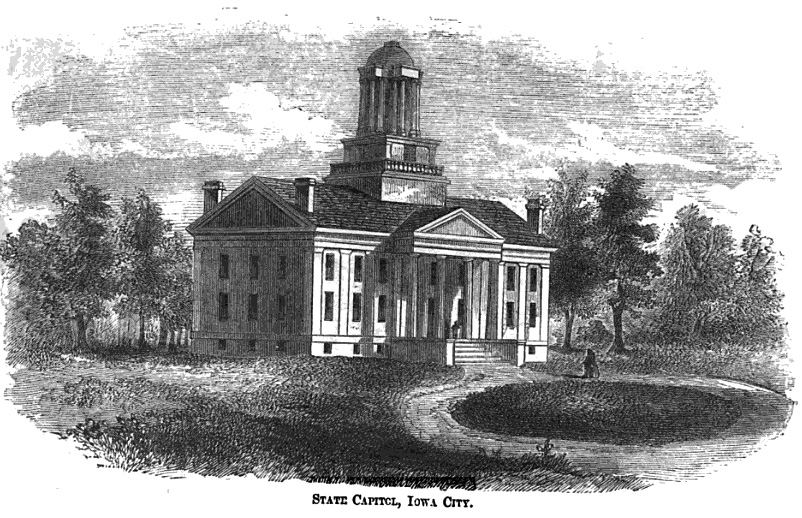|
National Advanced Driving Simulator
The National Advanced Driving Simulator (NADS) at the University of Iowa College of Engineering is among the largest ground vehicle driving simulator in the world along with Toyota's driving simulator at Higashifuji Technical Center. National Highway Traffic Safety Administration (NHTSA) owns the NADS-1 simulator, while the University of Iowa takes responsibility for operation and maintenance. Mission Make roads safer by researching the connection between humans and vehicles Driving research Research is done with both simulators and on-road vehicles. Funded by government and industry partners, their expertise includes: * Human factors * Distracted driving * Drowsy driving * Drugged driving * Connected and automated vehicles * Mobility * At-risk populations (older and novice drivers) * Simulation science * Crash biomechanics * Safety and crash data analysis Simulators NADS-1 simulator: One of the world’s most realistic driving simulators NADS-2 simulator: A f ... [...More Info...] [...Related Items...] OR: [Wikipedia] [Google] [Baidu] |
University Of Iowa
The University of Iowa (UI, U of I, UIowa, or simply Iowa) is a public research university in Iowa City, Iowa, United States. Founded in 1847, it is the oldest and largest university in the state. The University of Iowa is organized into 12 colleges offering more than 200 areas of study and seven professional degrees. On an urban 1,880-acre campus on the banks of the Iowa River, the University of Iowa is classified among "R1: Doctoral Universities – Very high research activity". In fiscal year 2021, research expenditures at Iowa totaled $818 million. The university is best known for its programs in health care, law, and the fine arts, with programs ranking among the top 25 nationally in those areas. The university was the original developer of the Master of Fine Arts degree and it operates the Iowa Writers' Workshop, which has produced 17 of the university's 46 Pulitzer Prize winners. Iowa is a member of the Association of American Universities, the Universities Research A ... [...More Info...] [...Related Items...] OR: [Wikipedia] [Google] [Baidu] |
Driving Simulator
Driving simulators are used for entertainment as well as in training of driver's education courses taught in educational institutions and private businesses. They are also used for research purposes in the area of human factors and medical research, to monitor driver behavior, performance, and attention and in the car industry to design and evaluate new vehicles or new advanced driver assistance systems. Training Driving simulators are being increasingly used for training drivers. Versions exist for cars, trucks, buses, etc. Uses * Novice driver training and testing * Professional driver training and testing * Training in critical driving conditions * Testing the effects of impairment on driver performance * Analysis of the driver behaviours * Analysis of driver responses * Evaluating user performances in different conditions (handling of controls) * Assessing fitness to drive for aging drivers * Testing future in-vehicle technologies on drivers or passengers (Human -Machine ... [...More Info...] [...Related Items...] OR: [Wikipedia] [Google] [Baidu] |
Toyota
is a Japanese multinational automotive manufacturer headquartered in Toyota City, Aichi, Japan. It was founded by Kiichiro Toyoda and incorporated on . Toyota is one of the largest automobile manufacturers in the world, producing about 10 million vehicles per year. The company was originally founded as a spinoff of Toyota Industries, a machine maker started by Sakichi Toyoda, Kiichiro's father. Both companies are now part of the Toyota Group, one of the largest conglomerates in the world. While still a department of Toyota Industries, the company developed its first product, the Type A engine in 1934 and its first passenger car in 1936, the Toyota AA. After World War II, Toyota benefited from Japan's alliance with the United States to learn from American automakers and other companies, which would give rise to The Toyota Way (a management philosophy) and the Toyota Production System (a lean manufacturing practice) that would transform the small company into a leader ... [...More Info...] [...Related Items...] OR: [Wikipedia] [Google] [Baidu] |
Higashifuji Technical Center
is a Toyota research and development facility in Susono, Shizuoka, Japan. The facility was established in November 1966. Notably, the center contains an advanced driving simulation housed inside a diameter dome with an actual car inside. The simulator is used to analyse driver behaviors in order to improve safety. Higashi-Fuji also includes a crash test A crash test is a form of destructive testing usually performed in order to ensure safe design standards in crashworthiness and crash compatibility for various modes of transportation (see automobile safety) or related systems and comp ... building. References External links * Shizuoka Prefecture Toyota {{Shizuoka-geo-stub ... [...More Info...] [...Related Items...] OR: [Wikipedia] [Google] [Baidu] |
National Highway Traffic Safety Administration
The National Highway Traffic Safety Administration (NHTSA ) is an agency of the U.S. federal government, part of the Department of Transportation. It describes its mission as "Save lives, prevent injuries, reduce vehicle-related crashes" related to transportation safety in the United States. NHTSA is charged with writing and enforcing Federal Motor Vehicle Safety Standards as well as regulations for motor vehicle theft resistance and fuel economy, as part of the Corporate Average Fuel Economy (CAFE) system. FMVSS 209 was the first standard to become effective on March 1, 1967. NHTSA cannot licenses vehicle manufacturers and importers, allows or blocks the import of vehicles and safety-regulated vehicle parts, administers the vehicle identification number (VIN) system, develops the anthropomorphic dummies used in U.S. safety testing as well as the test protocols themselves, and provides vehicle insurance cost information. The agency has asserted preemptive regulatory au ... [...More Info...] [...Related Items...] OR: [Wikipedia] [Google] [Baidu] |
Modular Programming
Modular programming is a software design technique that emphasizes separating the functionality of a program into independent, interchangeable modules, such that each contains everything necessary to execute only one aspect of the desired functionality. A module interface expresses the elements that are provided and required by the module. The elements defined in the interface are detectable by other modules. The implementation contains the working code that corresponds to the elements declared in the interface. Modular programming is closely related to structured programming and object-oriented programming, all having the same goal of facilitating construction of large software programs and systems by decomposition into smaller pieces, and all originating around the 1960s. While the historical usage of these terms has been inconsistent, "modular programming" now refers to the high-level decomposition of the code of an entire program into pieces: structured programming to the low- ... [...More Info...] [...Related Items...] OR: [Wikipedia] [Google] [Baidu] |
SAE International
SAE International, formerly named the Society of Automotive Engineers, is a United States-based, globally active professional association and standards developing organization for engineering professionals in various industries. SAE International's world headquarters is in Warrendale, Pennsylvania, 20 miles north of Pittsburgh, Pennsylvania. Principal emphasis is placed on global transport industries such as aerospace, automotive, and commercial vehicles. The organization adopted the name SAE International to reflect the broader emphasis on mobility. SAE International has over 138,000 global members. Membership is granted to individuals, rather than companies. Aside from its standardization efforts, SAE International also devotes resources to projects and programs in STEM education, professional certification, and collegiate design competitions. For historical legacy reasons, the label "SAE" is commonly used on tools and hardware in North America to indicate United States c ... [...More Info...] [...Related Items...] OR: [Wikipedia] [Google] [Baidu] |
Human Factors
Human factors and ergonomics (commonly referred to as human factors) is the application of psychological and physiological principles to the engineering and design of products, processes, and systems. Four primary goals of human factors learning are to reduce human error, increase productivity, and enhance safety, system availability, and comfort with a specific focus on the interaction between the human and the engineered system. The field is a combination of numerous disciplines, such as psychology, sociology, engineering, biomechanics, industrial design, physiology, anthropometry, interaction design, visual design, user experience, and user interface design. Human factors research employs methods and approaches from these and other knowledge disciplines to study human behavior and generate data relevant to the four primary goals above. In studying and sharing learning on the design of equipment, devices, and processes that fit the human body and its cognitive abilities, t ... [...More Info...] [...Related Items...] OR: [Wikipedia] [Google] [Baidu] |
Driving Simulators
Driving simulators are used for entertainment as well as in training of driver's education courses taught in educational institutions and private businesses. They are also used for research purposes in the area of human factors and medical research, to monitor driver behavior, performance, and attention and in the car industry to design and evaluate new vehicles or new advanced driver assistance systems. Training Driving simulators are being increasingly used for training drivers. Versions exist for cars, trucks, buses, etc. Uses * Novice driver training and testing * Professional driver training and testing * Training in critical driving conditions * Testing the effects of impairment on driver performance * Analysis of the driver behaviours * Analysis of driver responses * Evaluating user performances in different conditions (handling of controls) * Assessing fitness to drive for aging drivers * Testing future in-vehicle technologies on drivers or passengers (Human -Machine ... [...More Info...] [...Related Items...] OR: [Wikipedia] [Google] [Baidu] |






